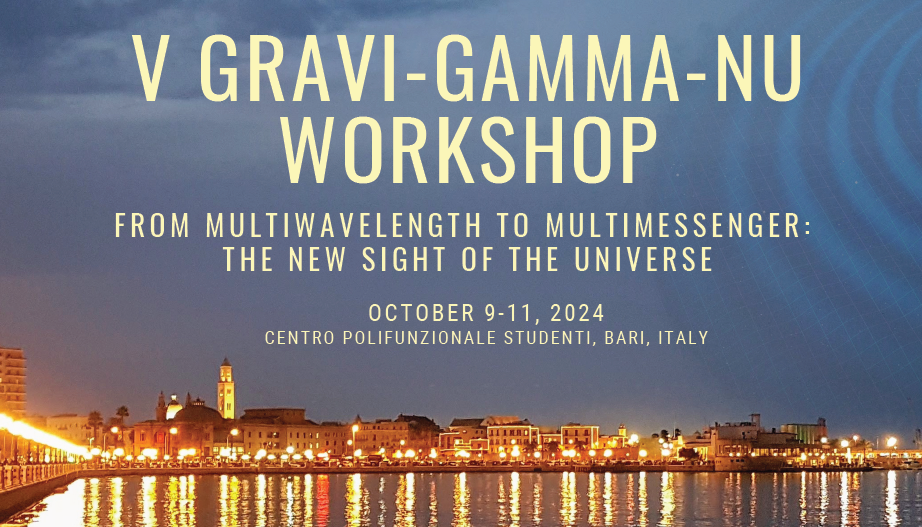Conveners
Poster lightning talks
- Elisabetta Bissaldi (Istituto Nazionale di Fisica Nucleare)
Poster lightning talks
- Sara Cutini (Istituto Nazionale di Fisica Nucleare)
Axion-like particles (ALPs) are a common feature in several extensions of the Standard Model, arising, for example, as a solution to the strong CP problem in quantum chromodynamics, or as a prediction of string theories. A significant property for the experimental detection of ALPs is their coupling to photons, which enables ALP-photon conversions in ambient magnetic fields.
In particular,...
The simultaneous observation of gamma rays and neutrinos from the same astrophysical source allows us to understand the mechanisms of particle production in the ultra-high energy environments of our Universe.
The Cherenkov Telescope Array Observatory (CTAO) is a new-generation ground-based instrument for very-high-energy gamma-ray astronomy, under construction in the northern and southern...
We have witnessed the detection of what has been recorded has the most energetic Gamma-Ray Burst (GRB) ever: GRB 221009A, also known as the B.O.A.T. (brightest of all time, with $\mathrm{E}_{\mathrm{iso}} \sim 10^{55}$ erg). It spans its emission over the whole electromagnetic spectrum, up to the very high energy (VHE) gamma-ray band: in particular the LHAASO observatory, in China, has been...
Multimessenger astrophysics relies on multiple observational data channels, requiring efficient methods to analyze events of astrophysical origin. Given the increasing volume and complexity of data from modern observatories, machine learning techniques have become essential for efficiently identifying signals.
This project applies machine learning techniques to time series data from the...
The Fermi Gamma-Ray Space Telescope has been operational for almost 16 years. During this period, the Fermi Gamma-Ray Burst Monitor (GBM) has been the most prolific Gamma-Ray Burst (GRB) detector ever, with more than 3700 observed GRBs to date. Tens of dedicated single-GRB publications and several general catalogs helped shedding light on the temporal and spectral characteristics of these...
I will explore the dynamics of objects orbiting black holes, focusing on when these dynamics remain regular and when they transition into chaotic behavior. The phenomenon of chaotic dynamics around black holes presents rich and complex behavior, which I will discuss across various scenarios, including both general relativity and modified gravity theories [1,2]. While point-particle dynamics...
Among astrophysical gravitational waves sources yet undetected, of great interest are the binary close encounters involving black holes and/or neutron stars. These systems are characterized by high orbital eccentricities and form via dynamical interactions in dense stellar environments, like globular clusters or Active Galactic Nuclei disks. Their detection could shed light on the different...
In 14 years of operation the Fermi-LAT detected more than 7000 γ-ray sources, of which one third are still not associated with counterparts in other wavelengths, and approximately one fifth are associated with blazar of unknown type. We developed a machine learning method based on an artificial neural network trained with multi-wavelength data which we used to classify blazars of unknown...

